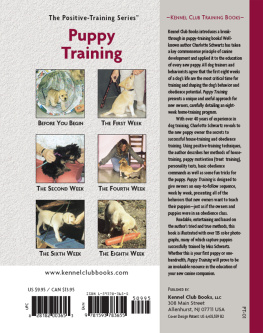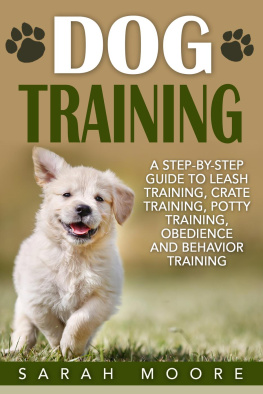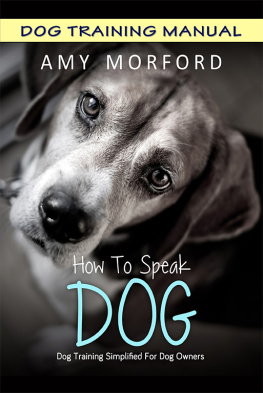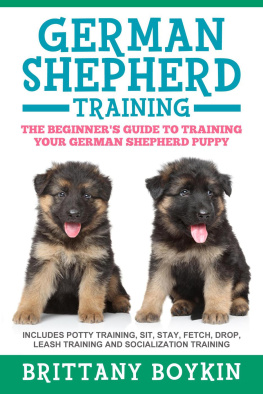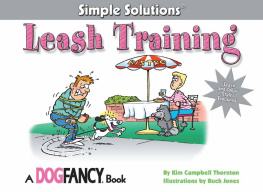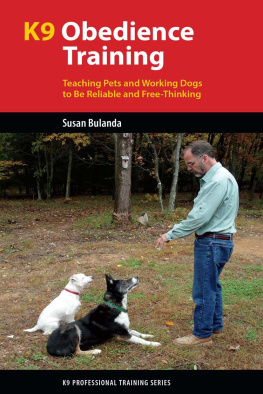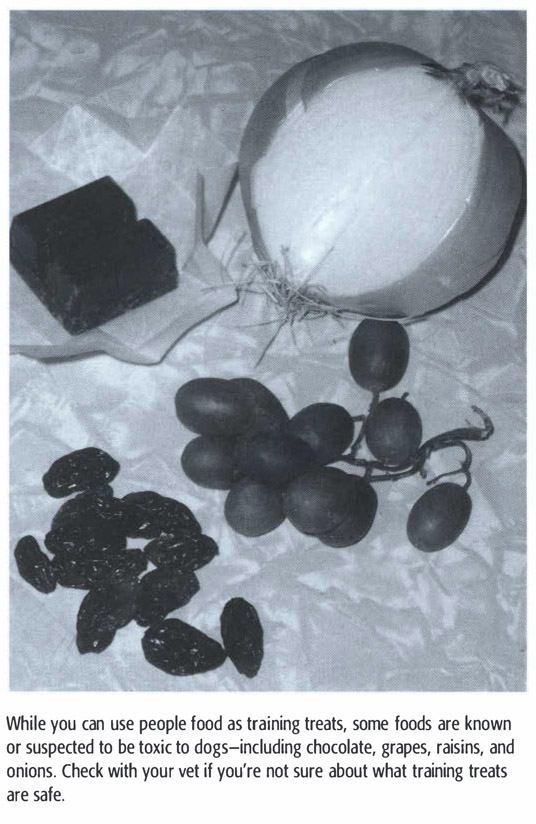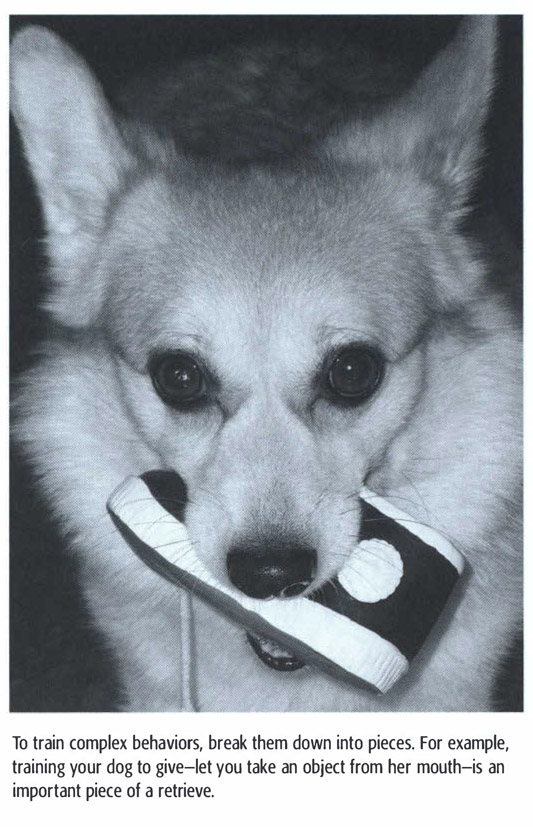Acknowledgments
Many thanks to Rochester, New York trainer Cindy Harrison of See Spot Think! Dog Training (www.seespotthink.net) for letting me take photographs of her students dogs for this book.
Additional Reading
Alexander, Melissa C., and Robert Bailey. Click for Joy! Questions and Answers from Clicker Trainers and Their Dogs. Waltham (Mass.): Sunshine Books, 2003.
Brown, Ali. Scaredy Dog! Understanding and Rehabilitating Your Reactive Dog. Allentown (Penn.): Tanacacia Press, 2004.
Coppinger, Raymond, and Lorna Coppinger. Dogs: A Startling New Understanding of Canine Origin, Behavior and Evolution. New York: Scribner, 2001.
Donaldson, Jean. Culture Clash. Berkeley (Calif.): James & Kenneth Publishers, 1997.
King, Trish. Parenting Your Dog. Neptune (N.J.): TFH Publications, 2004.
McConnell, Patricia. The Other End of the Leash. New York: Ballantine Books, 2003.
Miller, Pat, and Jean Donaldson. The Power of Positive Dog Training. New York: Howell Book House, 2001.
Pryor, Karen. Dont Shoot the Dog! The New Art of Teaching and Training. New York: Bantam Books, 1999.
Rugaas, Turid. On Talking Terms With Dogs: Calming Signals. Wenatchee (Wash.): Dogwise Publishing; 2nd edition, 2005.
Ryan, Terry, and Kirsten Mortensen. Outwitting Dogs. Guilford (Conn.): The Lyons Press, 2004.
Yin, Sophia. How to Behave So Your Dog Behaves. Neptune (N.J.): TFH Publications, 2004.
Chapter 1
General Tips
Training a dog or puppy is a bit like solving a puzzle. Your dogs behavior is a blend of learned and instinctive behaviors. Its influenced by your dogs temperament, breeding, history, and of course by your training skills and techniques. The trick is to refine your training techniques so they accommodate your dogand get results that are right for both of you.
As you do this, youll find that you continually return to a few basic training concepts. The tips in this section cover these concepts to help strengthen all aspects of your training program.
tip 1. Focus on what you wantnot what you dont want
If you dont know where youre going, how can you get there? Thats true of most things in life, and its true of dog training, too.
Sometimes we fall into the habit of thinking mostly about what we dont want. This happens a lot with dogs! We dont want our dog to pee in the house, or chew our shoes, or run away when we call, or bark like maniacs when our sweet old aunt comes to visit.
But think about it. Suppose youre about to adopt a puppy. Do you really want to spend the next ten, twelve, or fifteen years of your life chasing your dog around saying, No no no? Wouldnt it be better to guide your dog into behaviors that you want?
For example, instead of thinking, I dont want my dog to chew the corners of my carpet, try, I want my dog to chew his toys. Instead of, I dont want my dog to jump up on my guests, how about, I would like my dog to sit to greet people.
By framing your training goals in positive terms, youll have a clear destination in mind. Thats a great way to start your training journey.
tip 2. Use rewards
One of the best things to happen in dog training in the past few years is the shift from emphasizing correction, or punishment, to emphasizing rewards.
Using rewards is a whole lot smarter for most trainersand especially for companion dog owners. Perhaps the most important reason is that if you make a mistake using punishment, the consequences can be pretty sad. Some dogsnot all, but it can happenmay react to being punished by becoming aggressive or fearful. Other dogs shut down. They lose their sparkle. They may seem broken-spirited.
Many people also find that reward-based training feels better. Its nice to be a source of praise and treats, instead of a constant disciplinarian.
And best of all, reward-based training really works. Thats because rewards help to nurture and strengthen behaviors we want in our dogs. If a behavior is rewarding, your dog is more likely to exhibit that behavior again in the future. By figuring out how to apply that simple rule, you can use rewards to reach virtually any training goal.
tip 3. Try treats
Of all the rewards, treats are one of the most useful. They are versatile. You can use them at home, on walks, on trips, in public or private. They come in many varieties, which helps keep them fresh and interesting. Most important of all, dogs love food. For this reason, most dogs respond beautifully to being rewarded with treats.
Some people object to using treats. They think treats are like a bribe. But think about it: with bribes, the payment is demanded before the deal is finalized. When you train with treats, your dog earns those treats by giving you the behavior youre looking for. Its not a bribeits doggy payday!
Bonus tip: Keep treats small
While using treats to train is a great idea, you also have to watch your dogs calorie intake. The good news is treats dont have to be big to excite your dog. If you dont believe me, try spilling a few grains of rice under your table at the next mealtimeand then watch your dog help clean up. Hell go to great lengths to sniff out and lap up each grain of rice. Thats the power of even tiny treats!
So dont think you need to use store-bought dog cookies or other treats for your training. I use tiny bits of kibblethe kind made for toy breed dogsfor much of my training needs. If you do buy or make larger treats, break them into pea-sized pieces for training.
You should also feed your dog less on days when you give a lot of training treats. Just make sure that the combination of treats and regular meals youre providing add up to a balanced diet. (Check with your vet on this if youre not sure!)
tip 4. Keep sessions short
Generally speaking, more frequent, shorter training sessions are more effective than less frequent, longer sessions.
How short is short? This depends, in part, on your dog. If you notice your dog starting to lose interest, the training session has already lasted too long.
A good rule of thumb is to work on something for three to five repetitions at a time. Then take a break. Play with your dog, or do something else for a whilethen come back later for another (short) session.
tip 5. Be patient
One of the biggest challenges with training a dog is expecting perfectionespecially when you expect it right away. We often have a mental image of how a well-trained dog behaves. But training dogs takes time, so be patient. You and your dog will be together for a number of years. If you dont reach all of your training goals the first couple of weeks, thats okay. Youll get there.
tip 6. Break behaviors into manageable pieces


